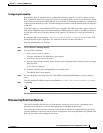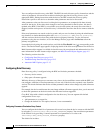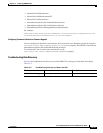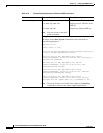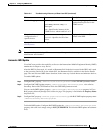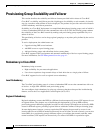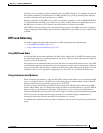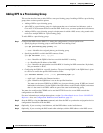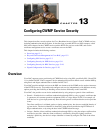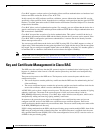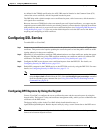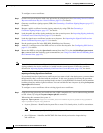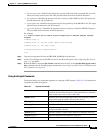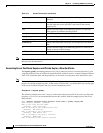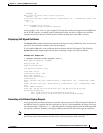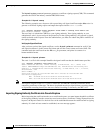
CHAPTER
13-1
Cisco Broadband Access Center 3.8 Administrator Guide
OL-27172-01
13
Configuring CWMP Service Security
This chapter describes security options for Cisco Broadband Access Center’s (BAC) CWMP services,
including authentication and encryption. It describes how to enable HTTP over SSL transport, called
SSL in this chapter, for the CWMP services and the HTTP file services on the DPE, and use the
certificate-management tool to create a certificate store on the DPE.
This chapter includes the following sections:
• Overview, page 13-1
• Key and Certificate Management in Cisco BAC, page 13-2
• Configuring SSL Service, page 13-3
• Configuring Security for DPE Services, page 13-11
• Configuring Security for RDU Services, page 13-18
• Signed Configuration for Devices, page 13-20
Overview
Cisco BAC supports secure provisioning of CWMP devices by using SSL, specifically SSL 3.0 and TLS
1.0, as defined in RFC 2246. It supports device authentication based on shared secrets with the DPE by
using Basic and Digest authentication as defined in RFC 2617.
Cisco BAC provides multiple services at the DPE: two instances of the CWMP service and two instances
of the HTTP file service. You enable and configure each service independently, with different security
options providing the flexibility of handling various devices differently on the same DPE.
Cisco BAC also provides secure device authentication by using unique or generic client certificates.
• Generic—Enables device certificate authentication through SSL by using a generic certificate that
is common to all customer premises equipment (CPE) or a large subset of CPE. For example, all
VoIP devices in a given deployment may have the same generic certificate that the service provider
issues.
The client certificate is validated against a signing authority key, but does not establish identity of
a given device. The device identifier is formed by using the data provided using HTTP Basic or
Digest authentication; or by using the data in the CWMP Inform message.
• Unique—Enables client certificate authentication through SSL by using the unique certificate that
each device provides. After the client certificate is validated by using the signing certificate
authority's public key, the device's unique identifier is formed by using the CN field of the client
certificate.



